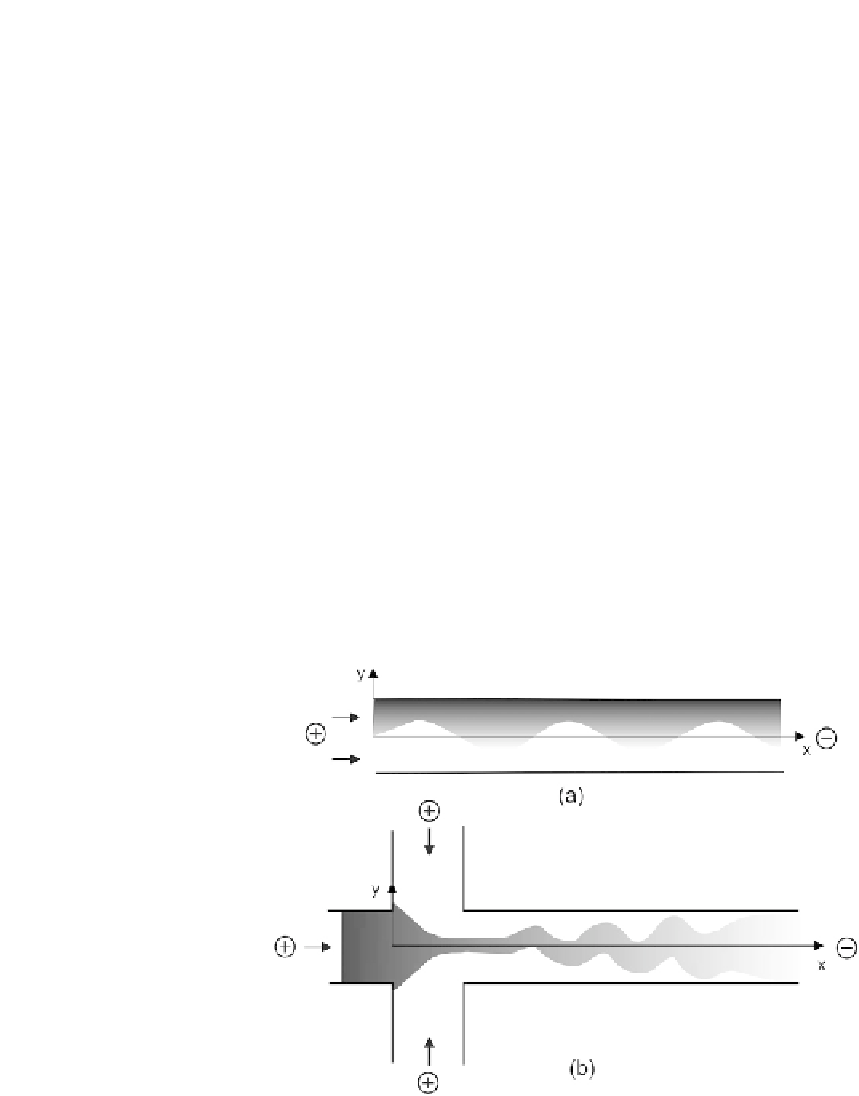Biomedical Engineering Reference
In-Depth Information
Disturbances introduced into these parameters will lead to instability in an electrokinetic flow. This
section discusses the instability effects of conductivity gradient, electric field and zeta potential, and
their application for mixing of electrokinetic flows.
7.5.1
Instability caused by conductivity gradient
Electrokinetic disturbance in a channel network driven by electroosmosis can be utilized for improving
mixing. Electrokinetic instability occurs when electroosmotic forces need to work against the elec-
troviscous forces in the flow. While electroosmotic force is electrostatic boundary force at the double
layer, electroviscous force is a body force caused by charge gradients in the bulk fluid. In general,
electrokinetic instability can be classified as convective and absolute instabilities. In convective
instability, the disturbance introduced at the inlet of the system propagates only downstream in the flow
direction. A convectively unstable system is physically a disturbance amplifier. In absolute instability,
the disturbance spreads in both directions: downstream and upstream. An absolutely unstable system is
physically an intrinsic oscillator where oscillating waves spread in both directions of the flow.
Convective instability occurs under the same conditions as of temporal instability discussed previously
[24,35]
.
Figure 7.17
shows the two basic configurations for mixing with electrokinetic disturbance. Mixing
streams with different ionic concentrations are driven by an electric field due to electroosmosis. At
a high field strength, the interface between the two streams become unstable and mixing is achieved by
transversal transport caused by electroviscous forces.
FIGURE 7.17
Two basic configuration for mixing with electrokinetic disturbance: (a) parallel lamination with two streams;
(b) parallel lamination or focusing with three streams.



Search WWH ::

Custom Search